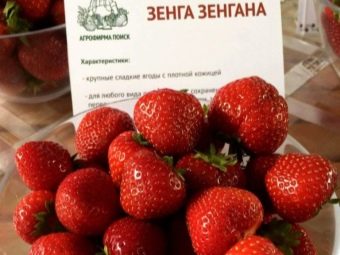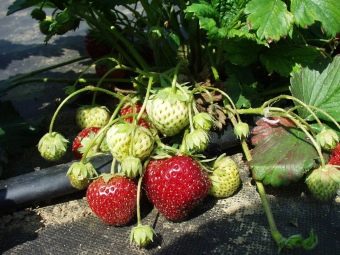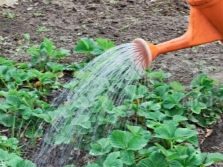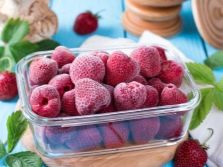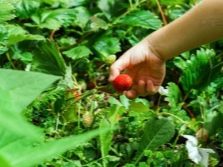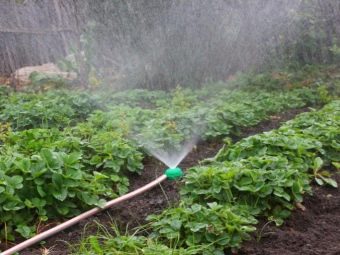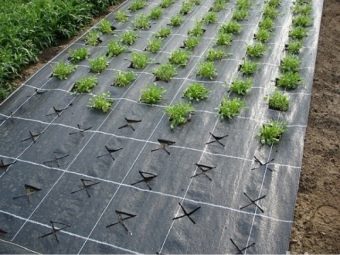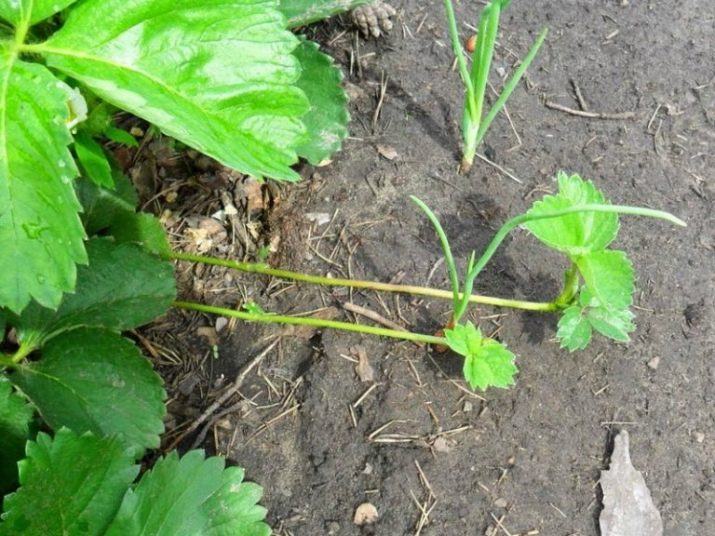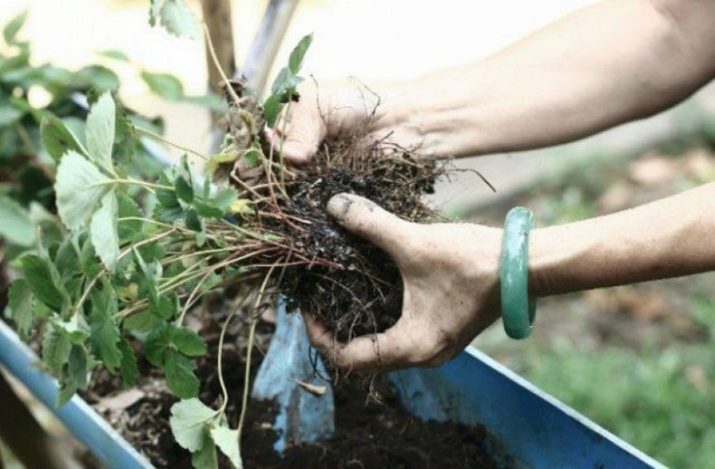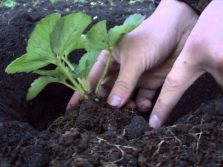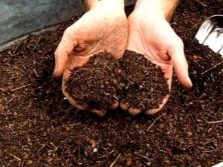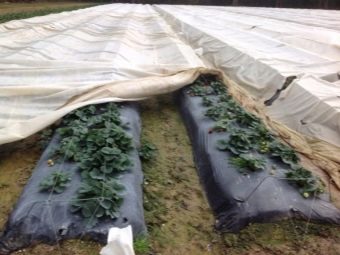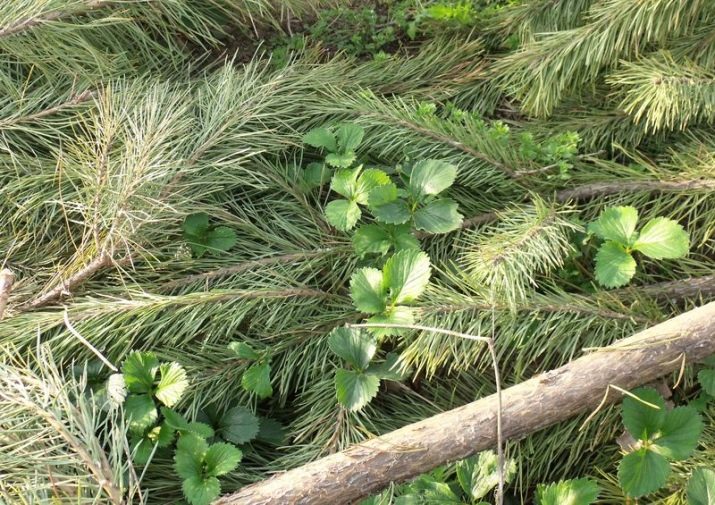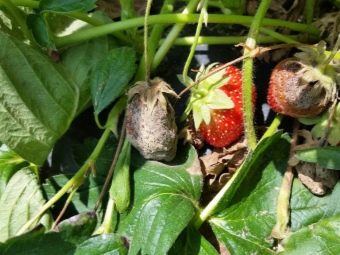Strawberry "Zenga Zengan": description of the variety and subtleties of cultivation
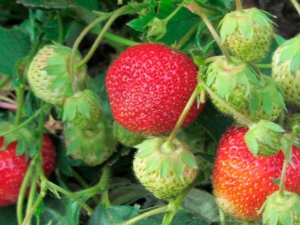
Not every variety of strawberries growing today in the territory of the Russian Federation can tolerate Russian growing conditions, unlike the variety Zenga Zengana. This is a hybrid plant that was bred in Germany by an experienced breeder in the 20th century and until this point is the benchmark for yields among European gardeners. It is noted that this variety is quite popular among gardeners, as it is resistant to frost, unpretentious to care and has good taste.
Characteristic
When breeding this variety of strawberries, all the efforts of breeders were aimed at creating a culture that was suitable for industrial cultivation in a harsh climate. Therefore, even a short summer and low temperatures allow strawberries of this variety to bloom and produce fruits. “Zenga Zengana” is a variety that can withstand severe frosts and droughts, and also has a compact bush size and abundant foliage on them. The leaves themselves are small, green. When flowering on the bushes, a large number of inflorescences. The plant survives well and can grow at a short distance from each other, and it also protects the area from the appearance of weeds.
The description suggests that the variety "Zenga Zengana" is distinguished by an average ripening period and early flowering. After landing in the ground the first berries can be obtained in a month. The main crop appears in the middle of summer. When creating the necessary conditions, garden strawberries can bear fruit twice a year. To do this, it is recommended to plant her bushes in early spring. Berries can be obtained in mid-summer, and the second fruiting occurs in August. During this period, the berries will be slightly smaller in size and small in weight, but quite tasty and juicy.
It should be noted that the plant cannot self-pollinated, since only female flowers are formed on it. To the ovary well formed, you need to plant next to the other varieties of male garden strawberries. It is also recommended that the site be insects for pollination. The fruits themselves are distinguished by a pleasant aroma and dark red color. The pulp is uniform and juicy. On average, the weight of the berry can reach 10 g, and its taste is characterized by sourness.
When testing, it was found that the average yield of a variety is 600 kg per hectare. If you provide a more thorough care and watering, then one strawberry bush can bring up to two kilograms of berries. At present, there are other varieties that are distinguished by high yields, but at the same time their indicator is much different from the indicators of this variety, especially if we consider that Zenga Zengana can grow in harsh climates and produce good yields. When breeding, this variety was supposed to be initially used for freezing and preservation, therefore the fruits themselves are distinguished by a firm consistency and have a rather hard pulp. Fruits are effortlessly separated from the stems and can be used for different types of processing. Berries tolerate transportation, do not choke and do not soften. Even when cooking, they retain their shape.
The advantages include the following:
- ease of cultivation and processing;
- fragrant and tasty berry;
- compact landing;
- ability to adapt to different growing conditions;
- getting double harvest.
The disadvantages include the fact that the berry does not like the heat and needs to be watered often. And also stands next to plant other varieties of strawberries that will make pollination. Plants can often be affected by gray mold and mites.
Landing methods
For most hybrid varieties, which is this plant, not all breeding options are suitable.
- The most rational will be the vegetative method. When the fruiting season ends, antennae remain on the strawberry bushes, which come into contact with the ground and take root there. As a result, young shoots appear.To get planting material in this way, it is recommended to use healthy-looking plants with good yields. They need to dig and transplant to areas that are well loosened and watered beforehand. Each bush should have up to two outlets. After disembarking, it is recommended to periodically trim the whiskers so that they do not pull nutrients on themselves.
If possible, it is recommended not to separate the shoots from the mother plant so that it develops well.
- Some gardeners use the method of reproduction - the division of the bush. This operation is usually carried out in the fall or spring. Here, too, it is recommended to choose only healthy plants for transplantation, on which there were many fruits and they are distinguished by a healthy appearance.
- Some may try to seed this variety. But as mentioned above, the flowers in this variety are only for women, therefore it is impossible to obtain material for planting from them with the necessary set of qualities. Experts say that at best, it will be possible to grow a hybrid from the seeds of a given plant using another plant variety. But this is only possible for those who are engaged in this business quite well and knows all the nuances. Most attempts to plant this plant with seeds does not bring results, and after planting they do not sprout at all.
Therefore, gardeners recommend Do not propagate this plant with seeds, but rather purchase seedlings in specialized nurseries. The best time for disembarking is considered spring, namely its beginning. If there are no prolonged frosts in the regions, the landing can be made in mid-March. The variety easily copes with light frosts, so after planting you can not cover the bushes with foil. It is recommended to choose areas that are slightly blown by the winds and have a soil with low acidity.
And also on the site should not be weeds and various pests. To do this, it is recommended to check the composition of the soil before landing. If pathology is found in the soil, it is necessary to treat it with ammonia solution, which is taken in a proportion of 2 kg per 1 bucket of water. This composition is processed area where strawberries will be planted later. It is also important that the groundwater in such a garden is not very high. The optimum depth is 70 cm.
Care
This plant is quite simple to care and can grow on rocky or sandy soil. This variety does not require frequent weeding and special preparation for winter, but at the same time, this plant has its own cultivation nuances that must be taken into account when planting and caring. “Zenga Zengana” loves quite a lot of water, which must be applied periodically and regularly to the site. After that, the soil is loosened and mulched to keep the moisture as long as possible. If the summer is dry, the bushes are watered often. It is recommended to take measures during fruiting, otherwise the berries will be small.
To get the maximum number of fruits of this variety, it is recommended to plant bushes in protected from the wind places that are well illuminated by the sun. In such areas, it is necessary to loosen the ground and make shallow holes, the distance between which should be 15 cm, and depth - 10 cm. One small seedling will be enough for such a hole. To obtain good yields, this plant is recommended to be fed regularly with various types of fertilizers throughout the season. It can be both mineral supplements and organic. Fertilizers are recommended to be applied to the ground and during planting. To do this, put a small amount of manure into the well.
Should remember that throughout the life of the plant, it gradually weakens and degenerates. Regardless of the quality of care, over time the fruits become smaller and the plants show signs of disease.In this case, you must update the beds. Typically, such work is done 1 time in 4 years. Shrubs are transplanted to a new place, while choosing quite young and healthy specimens.
In order to get healthy shoots and a bountiful harvest the following year, it is also recommended to properly prepare the crop for winter. To do this, you can cover it with a film. If there are severe frosts in winter, this will be enough. But in most cases such events will not be required. If the winter is warm and there is little snow, stop sprinkling the plot with a thick layer of mulch after harvesting.
Experts recommend for mulching to use coniferous branches, which completely cover the entire area. The layer thickness is up to 10 cm. This will help prevent frost from penetrating into the soil and to the plants, as well as provide an adequate amount of air to the bushes. In this case, it is necessary to abandon the use of tops or leaves for mulching. They will start to rot and bloom over time, so they will impede the flow of air to the plants and the ground. And also in this mulch pests can get divorced and appear rotting.
Disease protection
Zenga Zengan is resistant to major diseases and parasites, but it can often suffer from tick and gray rot. Harmful and weevils. To prevent this from happening, it is recommended to plant garlic or onion next to the flowerbed, to ensure good ventilation of the area and illumination. After watering and loosening the soil, it must be mulched with straw or grass. It is recommended to regularly and periodically remove weeds, and from the plant it is necessary to remove dry and damaged leaves.
Gray rot can strike all the berries on a bush and usually spreads around a spore. The disease can be excited due to pathologies that live in the soil and are left from the former plants growing earlier on the site. These microbes hibernate well and tolerate drought, so any kind of strawberry can be affected by this disease with high soil moisture at the site, as well as thickening of plantings. To prevent the occurrence of such a pathology, it is recommended to mulch the beds with needles. For preventive measures, you can use fungicides and spray such bushes with solutions before the growing season.
No less common disease that can affect this variety is leaf spot. Initially, small brown spots appear on the shoots, which then grow all over the bush. This adversely affects the yield and the ability of the crop to withstand extreme cold. Therefore, when the first signs of such a disease appear, it is recommended to treat the bushes with Bordeaux liquid in a low concentration.
It is worth remembering that the affected plants cannot be cured already, therefore it is recommended to take preventive measures in time. If an affected plant is noticed at the site, it must be urgently dug out and removed from the garden so that the disease does not spread further. For preventive measures, you can spray the site "Fitosporin", as well as periodically remove old leaves that have fallen from the bushes. If necessary, fertilizing with phosphorus or potassium is made, which will help improve the plant immunity.
Gardeners reviews
This strawberry variety has good recommendations from experienced gardeners and is popular. Recently, it can be noted that it is often discussed in various forums. Mostly there are good reviews, but some leave negative comments due to the average taste of the berries themselves, as well as the frequent defeat of the bushes with gray mold. Nevertheless, large enterprises are successfully engaged in the cultivation of this type of strawberry on an industrial scale, which makes it possible to obtain abundant crops with proper care.According to responses of summer residents, it is also possible to determine that the quantity and quality of fruits depends on the conditions that are observed in one or another region of crop cultivation, as well as the correctness of agricultural technology.
Those who try to breed and propagate this sort of strawberry with the help of seeds often fail, which also affects the appearance of negative reviews. Therefore, it is recommended to plant only seedlings of this variety, which will bring less hassle and allow it to settle down faster, regardless of growing conditions. As you can see, "Zenga Zengan" is a fairly common variety that is unpretentious in care and can grow in various climates. The strawberry itself is distinguished by high yield, and the berries have a sour taste and a pleasant aroma.
In order to get the highest yields, it is recommended to regularly feed, water and fertilize.
A short review of Zenga Zengana strawberries is in the next video.


